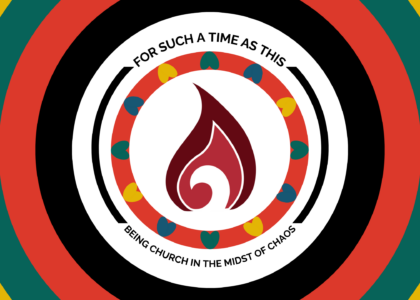By Sarah Macias
With the 2018 Alliance theme of “Earth: Beloved Community” fresh on our hearts and minds, Rodney and I found ourselves shifting into a new role – as farmers.
It was an exciting and frightening move for us. But I am happy to say that we have been having some success in bringing the farm back to life. Perhaps this is because we are the first owners to live on the place in almost a century. Apparently calling a place home can introduce an added care and attentiveness.
Helping us now on this project are six cows, three of whom will calve this spring. We are able to move them frequently, since we live here, which results in increased soil health and carbon sequestration. Chickens follow behind, scratching the ground and offering their own contributions to the earth (and to our breakfast table).
It is a symbiotic, mutually beneficial relationship – soil, grass, cow, chicken, human – and an experiment in creating beloved (diverse) community on the pastures of Sister Grove Farm.
I must admit, it was quite satisfying to see that we could do this and still have time to share pictures with friends on Facebook. The cows were fine on their own and the chickens put themselves up at night as they would go into their eggmobiles to roost. What a nice surprise!
But, in his classic text The Diversity of Life, E.O. Wilson states that, “…the more species living in an ecosystem, the higher its productivity and the greater its ability to withstand drought and other kinds of environmental stress.”1 In other words, the genesis to really restoring life and resiliency on the farm would require more than just cows and chickens.
And so, our Lenten discipline this year has included the introduction of five sheep, three of whom will lamb this spring. The level of attention and care required by us increased dramatically as we took on a new role – as shepherds.
We still sleep in the house and Rodney has not taken up the harp yet, so we are not taking the biblical metaphor too literally. But even at a small scale we are learning quickly that the vocation of shepherding is not a part-time, occasional activity. It is a day in, day out commitment – certainly to an individual animal. If one of our sheep is lost, my guess is we will search all day and night until we find her. But there is also a commitment to the practice of multi-species grazing as a means of regenerating life into a depleted Earth from the negative effects of mono-cropping (growing a single crop year after year on the same land).
The lectionary reading for the week of Earth Day this year includes the familiar image of Christ as the good shepherd. Since our five new pasture residents have arrived, I envision Jesus tromping through the mud (it rained last night) as he tries to bring together a wildly diverse spectrum of sheep who are all over the place – the Hampshires, the Dorpers, the Rambouillet, the black sheep, the old ewes, the rams, and especially the lambs (the least of these). They will come from different folds – some with wool coats and others with hair (who knew?) – all quite different but all drawn by the sound of the shepherd’s voice.
Does Earth have a voice as well? Does Earth perhaps even exhibit some of the same qualities as the shepherd. Earth (like Christ) is with us, before us, behind us, in us, beneath us, above us, on our right, and on our left. Earth is the source of our being – “the Great Mother who nourishes us and bears us,”2 as Leonardo Boff says. Earth can teach us her wisdom if we listen – Earth can sustain us with healthy ecosystems and societies if we listen to that voice that is calling – but, like the good shepherd, Earth surely does utter her own lema sabachthani – my God, my God, why have you forsaken me?
Both Earth and Christ are forsaken when oppression of others who are different than us seems to rule the day; when we contribute either mindlessly or with lack of any concern to systems of racial, social, economic, and environmental injustice – privileging some while excluding others. Not everyone may fit the purposes of a mono-crop planting scheme prescribed by Empire and Industry but everyone, regardless of species, gender, sexual, racial, or ethnic identity contributes in their own ways to the resiliency of Earth as a Beloved Commun(ion)ity.
Listen closely with me. We may need to put our ears closer to the ground. Hear the biodiversity of voices from our human and more-than-human kin—those not given the chance for their full expression—voices of abandoned, forsaken sheep, given up on being found—and surely, we will be hearing the voice of God.
On this Earth Day, may we commit to assisting the good shepherd in bringing the farm called Earth back to life so that all who live here can truly call this place home.
1 Edward O. Wilson, The Diversity of Life, new ed. (New York: W. W. Norton, 1999), xxiii.

Rev. Sarah Macias is pastoralist and theologian at Sister Grove Farm in Van Alstyne, Texas. She represents the Alliance of Baptists on the Board of Creation Justice Ministries and is a member of the Creation Justice Community. She and her husband Rodney are members of Alliance congregational partner Royal Lane Baptist Church in Dallas.




Recent Comments